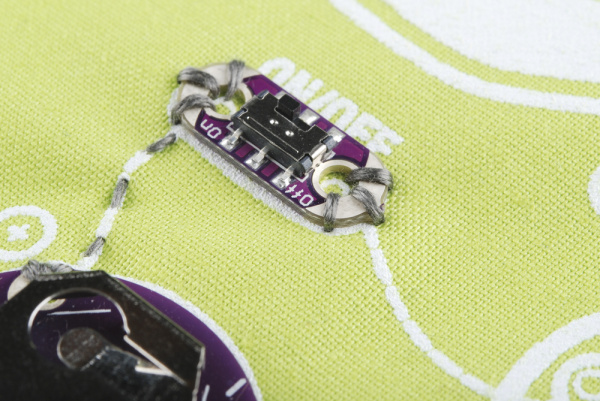Sewing with Conductive Thread
This Tutorial is Retired!
This tutorial covers concepts or technologies that are no longer current. It's still here for you to read and enjoy, but may not be as useful as our newest tutorials.
View the updated tutorial: LilyPad Basics: E-Sewing
What is Conductive Thread?
Conductive thread can carry current the same way that wires can, which means it can be used to create a circuit. This allows the user to sew a circuit together, creating flexible circuits that require no soldering. In some textile-based projects, this is the most practical tool to maintain the hang of the fabric. Educationally, it's a very safe and unintimidating way to learn how to use embedded electronics.
SparkFun currently sells silver and stainless steel threads. Beyond our selection of conductive threads, there exists a staggering number of conductive materials. If it's electrically conductive (you can check this with a multimeter), and you can sew with it (this includes hand and machine, sewing and embroidery, crocheting, knitting, all sorts of things, really), I encourage you to consider it a conductive thread. Some traditional embroidery threads have enough metal content to be conductive, and some wires are fine enough to sew with. If you keep an open mind (and a multimeter close at hand!), quite a few materials can find new life in your projects!
